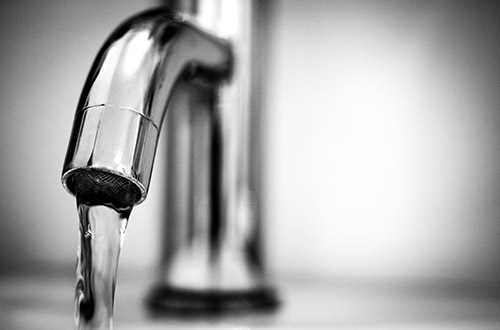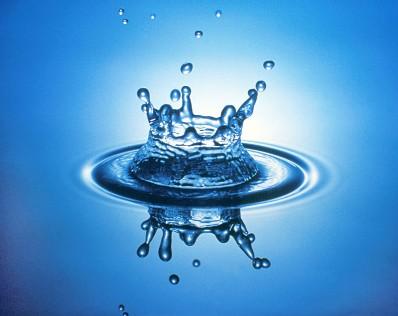Environmental Tests : Well Water Basic Profile Test
According to the Connecticut Department of Health (DPH), approximately 15% of Connecticut’s population rely on private wells as their source of drinking water. Private well owners are responsible for the quality of their own drinking water. Because a clean source of drinking water is critical to your health, the DPH recommends testing your well water once a year for routine analysis and after any work is done on your well, pump or piping. The recommended tests, (total coliform bacteria, nitrate, pH, sodium, turbidity, and color) are all covered in Basic Profile- Bacteria Physical/Chemical test.
The Basic Profile Water Test analyzes the following bacteria and physical/chemical properties:
Coliform Bacteria are not disease-producing organisms themselves, but they are used as an indicator of disease-producing organisms. When coliform bacteria are present, there is an increased probability that the source water may have been contaminated by surface water or fecal material and may also contain disease-producing organisms. Chlorination is the best method for eliminating bacteria from the water, but if possible, the source of contamination should be located and treated so the problem does not recur.
For healthy people, the Sodium content of water is relatively unimportant because the intake of sodium from other drinks and foods is so much greater. People following a low sodium diet because of hypertension, kidney, or cardiovascular disease should be concerned with an elevated level of sodium. The usual low sodium diet allows 20 mg/L in the drinking water. Elevated sodium levels are likely to be seen with the use of a water softener. Other possible causes are run-off from road salting or sewage contamination.
An elevated Nitrate Nitrogen level may be an indication that agricultural fertilizer or waste disposal is polluting the water. The AL of 10 mg/L has been established to prevent a disease called methemoglobinemia “blue baby disease” in infants. Reverse osmosis and ion exchange resins can remove nitrates.
Odor in water can be caused by foreign matter such as organic compounds, inorganic salts or dissolved gases. These materials may come from domestic, agricultural or natural sources. The action level (AL) has been set according to aesthetic values but acceptable waters should be free of any objectionable odor.
Manganese at levels greater than .05 mg/L may produce brownish black stains in laundry and on fixtures and impart an objectionable odor and taste. It is usually found along with iron in soil with a high mineral content. Oxidation followed by a greensand filter is a common method of manganese removal.
Water Color may be caused by dissolved organic material from decaying vegetation and/or certain inorganic material such as iron or manganese. While color is generally not a problem from a health standpoint, its presence is aesthetically unpleasing and suggests that the water may need appropriate treatment.
The AL for Chloride was established primarily as an aesthetic standard. The concentration at which the average person can detect a salty taste in water is 250 mg/L. A very high chloride level can lead to the corrosiveness of water on pipes and heating equipment and is usually associated with a high sodium level. Sewage contamination, run-off from road salting or an improperly maintained water softener may cause elevated chloride.
Turbidity is the presence of suspended material such as clay, silt, plankton, finely divided organic material and other inorganic materials. Turbidity in excess of five units are detectable in a glass of water and are usually objectionable for aesthetic reasons. The most common method of lowering turbidity is with a filter system.
Sulfate in drinking water has no beneficial effects. The desirable limit is 250 mg/L. At higher concentrations sulfate may have a laxative effect and cause taste deterioration.
pH is a measure of the acid or alkaline content of water. Water with a low pH (acidic) is corrosive to plumbing and may cause leaching of toxic metals such as lead or copper. Soda ash can be added to the feed water to effectively raise the pH.
Iron levels above 0.3 mg/L can discolor fixtures and laundry and may impart a metallic taste to the water. Iron is frequently present in water because of the large amounts present in soil. Corrosive water will also pick up iron from pipes. Common methods for removing iron from the water are aeration or chlorination of the water followed by filtration.
Calcium and Magnesium salts are the major cause of Hardness in water supplies. Although not detrimental to health, hard water retards the cleaning action of soaps and detergents. When hard water is heated it will deposit a hard scale on heating coils and cooking utensils with a consequent waste of fuel. A water softening system is the most common method of lowering the hardness in water. The following is a scale on which to compare your water hardness: (0-75) low/soft; (76-150) moderate; (151-250) hard; (over 250) very hard.

Water Testing
In spite of all the stories we hear about possible contaminants in the water supply, most people have water that is safe to drink, especially those served by a large municipal water system. However, well water should be tested periodically for coliform bacteria.
Additionally, if the property is located in an agricultural area, the water should be tested for nitrates, and if the home is more than 30 years old, or if the plumbing pipes are joined with lead solder, then the water should also be tested for lead. The Federal Housing Administration (FHA) requires water tests for bacteria, nitrates, nitrites and lead.
Other reasons a water test may be warranted:
lender may require a water test prior to loan approval
well located downstream from a septic system
use of lawn fertilizers, salt or de-icers near the well
Testing more than once a year may be advisable in certain situations:
pregnant or nursing household member
unexplained illnesses in the family
any change in taste, odor, color or clarity of the water
a neighbor tests positive for contaminants in their water
any dumping of chemicals, pesticides or fuels into or near your well
if any part of your well system has been replaced or repaired

Home Inspections
When they sign the contract of sale. The county introduced this law to monitor the water quality in the area regarding private wells. It requires the seller to have their well tested by a certified water operator and laboratory for a number of substances including bacteria, chemicals, metals and other contaminants.
The tests must be paid for by the seller and be ordered within 10 days of the signing of the contract. The law also states that the buyer and seller cannot waive the testing because a copy of the test results must be sent by the laboratory to the County Department of Health, and to the seller via Home Inspections This new law also affects tenants who rent a property that is supplied with well water.
Q2: What types of properties are subject to the testing requirement? A2: The Law covers SALES and LEASES of properties served by private wells, as well as
Q3: When in the real-estate sales process does testing have to happen? When the contract is
signed? What about rentals? What about new wells or wells not in use? A3: The law requires the following:
• Upon the signing of a contract of sale for a property subject to the Law, the seller must cause a water test to be conducted in the manner provided, and for at least the contaminants required, by the Law.
• The lessor of real property served by a private well must test the well water: (1) by November 19, 2008; or (2) within twelve (12) months from the date that any real property becomes subject to a leasehold if a lessor begins leaking the real property after the law’s effective date (i.e., November 19, 2007); and (3) at least once every five (5) years after the dates established in (1) or (2) above. Results must be provide3d to current lessees within five (5) days of receipt of water test results. Every time a rental property subject to the Law id Leased, a written copy of the most recent test results must be given to the lessee.
• All new wells, prior to first use must have the well water tested prior to use. All wells not in use for a period of five (5) years are treated as new ells and must be tested prior to use.
Q4: When do the testing requirements take effect?
A4: The effective date of the Law is Monday, November 19, 2007. Accordingly, on and after that date, all sales of property served by private wells, all new wells and wells that have not been in use for a period of five (5) years are subject to the Private Well-Water Testing Law and are required to meet the testing requirements. Testing is not required for real estate transactions that were already under the contract before the statute went into effect (November 19, 2007).
Home Inspections
Home inspections, radon testing, and water quantity testing. These inspections can be either for the buyer or seller. Our home inspections include:
Structure
Roof
Plumbing
Heat and Cooling Systems
Foundation
Electrical
Drainage
Ventilation and Insulation
home inspectors will provide you with a digital detailed report complete with pictures and a summary listing any major concern or safety hazard. The inspections we provide conform to and exceed the InterNACHI standards.
Home Inspection offers flexible hours for your convenience. Inspections can be scheduled Monday through Saturday
Water Well Inspections
Private water well is one part of your home that you probably never think about, until there is a problem. And if not properly inspected, it can lead to a very expensive repair that you never expected and certainly never wanted. This can be avoided with the proper well inspection.
If you are looking to buy a home with a private water well, it is important that you have the system inspected. There can be many hidden problems that you will not know about until they happen. Unlike most things in a house, when something goes wrong with your well it’s usually very expensive.
Are you selling your home? When a home is put on the market to sell, it may be required in your county (like County) that the well and septic systems be inspected before the house can be sold. This is called Time of Sale or TOS. You may want to check with your Realtor or County Health Department beforehand to see if your well needs to be inspected.
it means that we have gone through many hours of training to make sure we know how to properly inspect your well and septic systems. In fact, WCPH Environmental Health Division is known to have one of the best training programs for well and septic systems in Michigan. Our inspections are done the same rigorous way we do the WCPH TOS program, which include making sure that the water well is properly located away from possible contaminations, the well head is properly installed, and to check for abandon wells on the property.